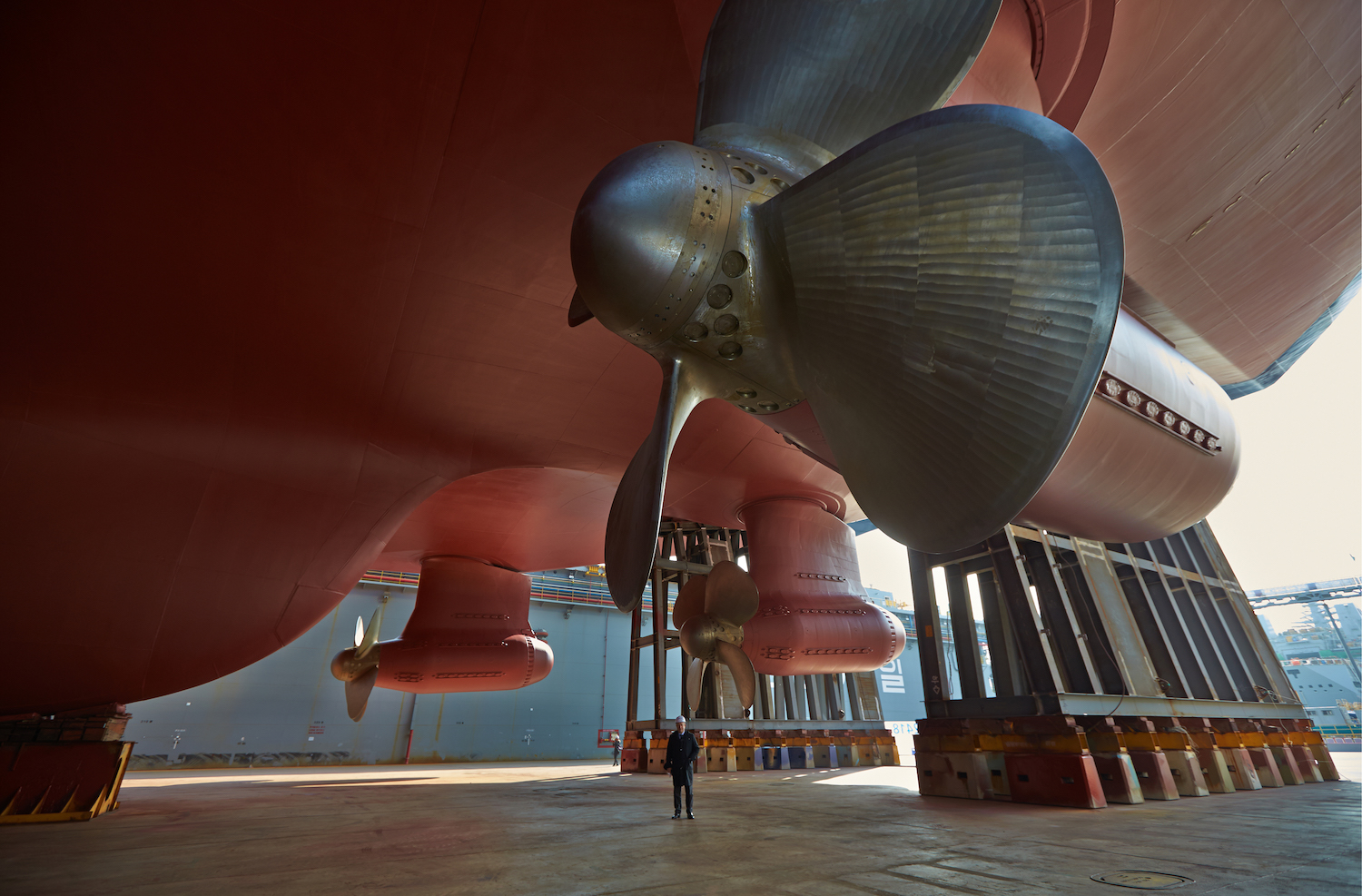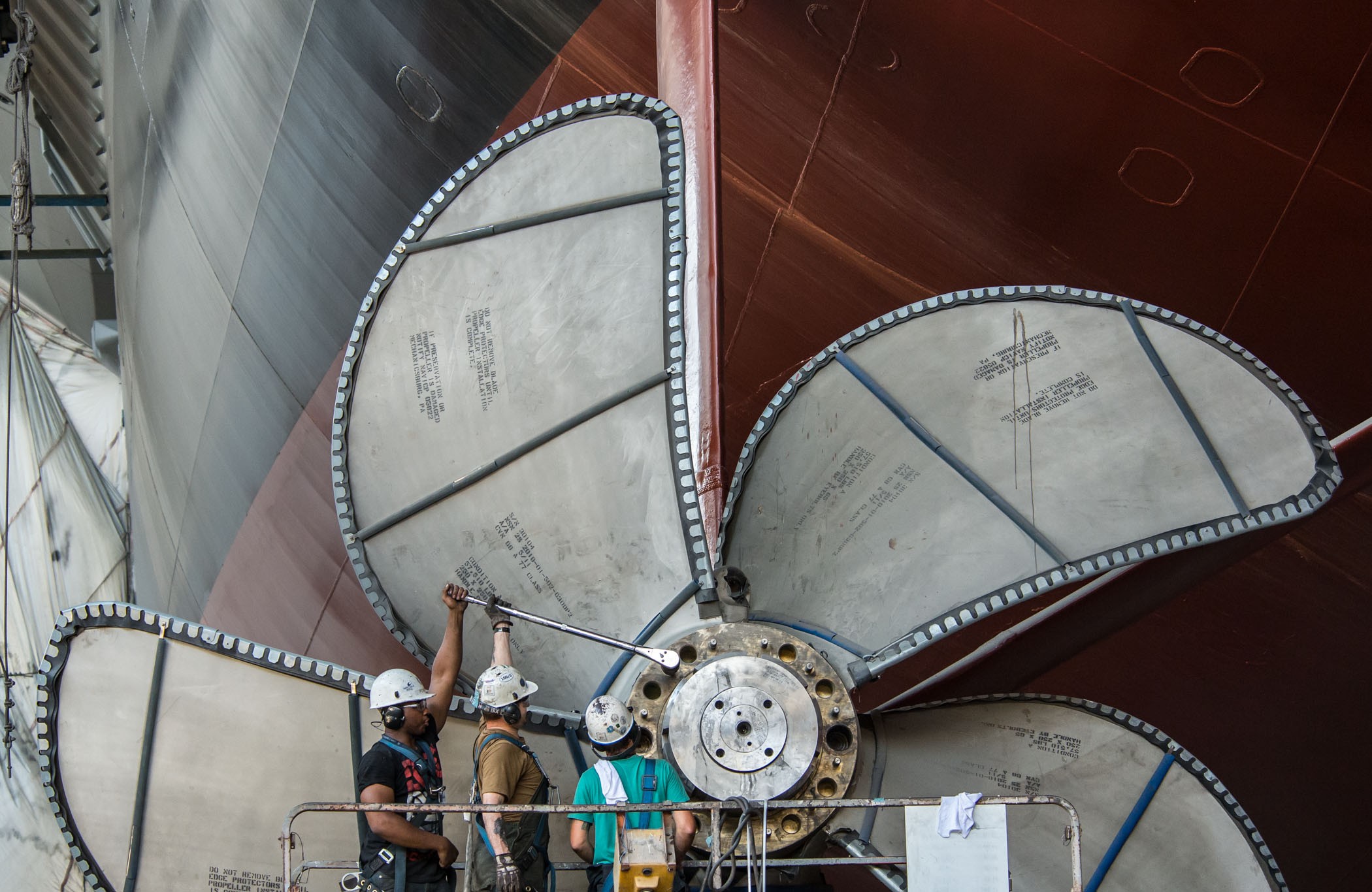How Fast Does a Cruise Ship Propeller Spin?
Table Of Content

Energy efficiencies are the key to reduce fuel consumption, CO2, and other emissions, and contribute to climate protection. Mein Schiff 3, for example, is expected to feature special energy management systems that help to consume 30% less energy than comparable size ships. In 2012, TUI reduced the waste amount to 10,7 L (per passenger day), which is 27,8% less (over 2011). In 2012, TUI used 54,463 tons of fuel, including 9,732 tons LSFO (low sulfur fuel oil), 40,880 tons HFO (heavy fuel oil) and 3,851 tons MDO (marine diesel oil). RMS Queen Mary 2 is equipped with exhaust gas economizers, using waste heat from engines to produce steam.
VIDEO: Disney Wish Construction Reaches Another Milestone as Propeller Azipods Are Installed - WDW News Today
VIDEO: Disney Wish Construction Reaches Another Milestone as Propeller Azipods Are Installed.
Posted: Thu, 25 May 2023 07:00:00 GMT [source]
Things A Marine Engineer Should Check In A Lab Analysis Report Of Fuel Oil
These types of propulsions combine propulsion and steering systems. They use a two-stroke engine with a shaft, which passes through the stern tube and the shaft tunnel. It then connects to a propeller outside the ship’s hull located in the stern, aft. Gas in the ship is consumed and generates all the power necessary while at sea.
Carnival Cruise Line Fantasy Class
Should a ship have a large breadth, two-plus systems that operate independently can provide subtle maneuverability. It also has lower fuel consumption, lower lube oil, lower vibration, and low emissions. This helps with crash maneuvering, which is significantly better than conventional methods. Propulsion systems are located below a cruise ship’s height for greater efficiency. A frequency controller changes the frequency of the supplied power. Should the vapor bubbles be close to or directly on a solid wall surface like the blade of a propeller, the implosion generates a liquid microjet exerting high stress on the surface.
Wind-assisted propulsion
Today cruising is one of the most popular vacations, but there are significant environmental downsides. Mega-ships burn the dirtiest fuel in the world, even if they are sitting in port. Asthma, cancer, respiratory illness, heart disease, are the results of burned in ports nasty bunker fuel. All the ship's electrical equipment is certified "explosion-proof". The LNG is stored at temperatures -160 Celsius (-256 Fahrenheit) and under pressure 4-6 bars.
His dedication led him to enlist in the Swedish Army at the tender age of 17, where he engaged in topographical surveying. At the following tag-link can be found listed all CruiseMapper's news related to propulsion-power accidents. The AIDAprima ship's first successful test run for LNG supply was in Hamburg Germany on May 7, 2016. While berthed, the ship was successfully provided with LNG at all the itinerary's ports of call (Hamburg, Rotterdam, Le Havre, Southampton, Zeebrugge). Currently, NCL Norwegian Epic has two rudders with conventional non-Azipod screws. But how does she manage to maneuver if they can push in one direction only?
Understanding Cruise Ship Propellers
It is vital to execute routine maintenance and ensure the design is sound to ensure optimal operation and reduce the negative influence on marine life. For smaller cruise ships, such as those accommodating a few hundred passengers, propellers can range in diameter from around 3 to 6 meters (10 to 20 feet). These ships typically have lower power requirements and operate at lower speeds, allowing for more compact propellers. Ship's powerplant includes 4x Wartsila engines (model 8L50DF, total power output 30,4 MW). Propulsion is diesel-electric (2x shafts with fixed-pitch propellers) and wind-assisted (with 1x rotor sail).
Propellers are placed at the back of the ship and work to move it through the water. The more propellers a cruise ship has, the more power it has to move and steer. In addition, multiple propellers create a more stable ride for passengers. As with all propellers, feathering props require basic care and maintenance to ensure their efficiency and the engine’s longevity. This starts with a properly spec’d and regularly refreshed anode, and the prop blades must be kept clean. As do folding propellers, feathering props greatly reduce drag when the boat is sailing; however, the way that they achieve this gain is significantly different.
Cruise Ship Propeller Size
When discussing boat propeller spin, we cannot ignore the colossus of sailing—the cruise ship propeller. These massive, specialized props are designed to maximize fuel efficiency while providing enough power to move a tremendous vessel in the ocean. Cruise ship propellers have unique designs, materials, and sizes, which certainly make them stand out in the world of propellers and cruise ships.
Shore-to-Ship Power Supply
Using your existing propeller, determine what is the maximum RPM you are able to obtain. If during this test, you begin to exceed the maximum rated RPM of the engine, reduce throttle setting to a position where maximum RPM is not exceeded. One essential aspect of finding the right prop is monitoring your engine's RPM, as mentioned earlier. Using a tachometer will ensure that you can keep an eye on your engine's performance.
The manufacturing process involves precision engineering, with each propeller tailored to the specific needs of the ship. With modern advances in technology, propellers are becoming more efficient and eco-friendly, helping to reduce the environmental impact of these massive ships. Join me as we explore the fascinating world of cruise ship propellers, and discover how these powerful machines are shaping the future of ocean travel. Several may be designed using a combination of azimuthing pods and pods which don’t rotate (fixipods) for forward/backward motion.
The technology uses heat exchangers that evaporate a carrier fluid circulating in a closed system. This gas (at 2-bar pressure) drives a turbine, then a 100 kW generator produces electricity. After that, the gas is cooled (in a vacuum chamber) and liquefied. Then Heat exchangers cool the carrier fluid to temperatures around 20 C / 68 F. The next scheme shows the dual-engine powerplant (Wartsila) and propulsion (Azipod) of the cruise ferryTallink Megastar.

The benefits to this are greater fuel efficiency, increased ship safety in bad weather, and decreased distance required for stopping. These are pods that house propellers that can rotate 360°, allowing them to maneuver optimally in the sea. They have replaced rudders and are believed to have benefits over a conventional screw-like propeller system. An example of this is the Queen Elizabeth 2, which uses 433 tons of fuel each day – 18 tons per hour – while traveling at 28.6 knots. It carries adequate amounts of fuel to sail without stopping for 12 days. However, the iconic vessel has since retired from sailing and remains in Dubai.
8 Biggest Ship Propellers in the World - Marine Insight
8 Biggest Ship Propellers in the World.
Posted: Thu, 30 Mar 2023 07:00:00 GMT [source]
The marine propeller made by German company Mecklenburger Metallguss GmbH can easily be called the biggest marine propeller with its 131 tons weight. If you are unsure about the best prop for your boat, experiment with different sizes and pitches. Look for a propeller rental or test program at your boat dealer or marina. Additionally, there may be advancements in materials science that allow for the creation of more efficient and durable propellers. This could include the use of composite materials or 3D printing technology.
Comments
Post a Comment